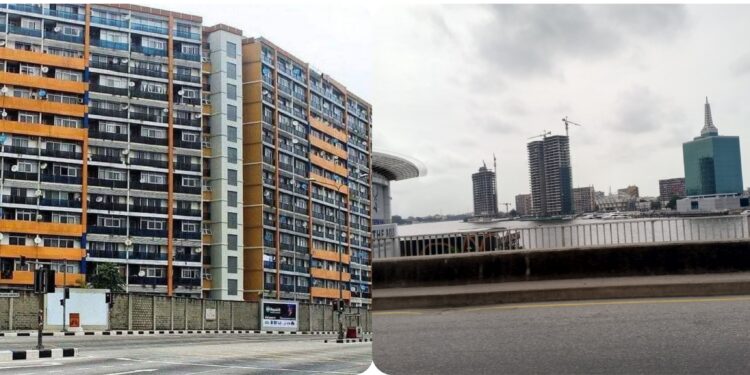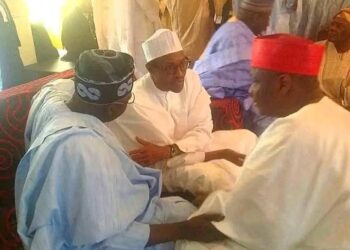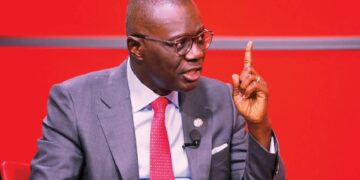From lawmakers’ paradise to a contested landmark, the rise and fall of 1004 Estate in Lagos reveals how privilege and neglect have shaped Nigeria’s most ambitious city.
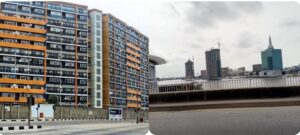
By Ibrahim Kegbegbe
The Legacy of 1004 Estate in Lagos
On the glistening waterfront of Victoria Island, where the Lagos Lagoon meets the restless hum of Nigeria’s commercial capital, rises 1004 Estate — an architectural landmark that has witnessed the ebb and flow of Nigeria’s political, social, and economic tides.
Once the pride of Nigeria’s federal housing ambition, this sprawling complex of over 1,000 apartments spread across 11 hectares is more than just concrete and glass. It is a living metaphor for Nigeria itself — conceived with lofty intentions, redefined through political transitions, privatized in a rush of economic liberalization, and today, a contested symbol of modern Lagos.
The Lawmakers’ Paradise: 1004 Estate’s Early Years (1979–1991)
When the estate opened in 1979, it was no ordinary residential complex. Designed by pioneering Nigerian architect Isaac Fola-Alade, 1004 was built to house the crème of Nigeria’s political class. Senators and members of the House of Representatives lived in its high-rise towers, a stone’s throw from the National Assembly, which then sat in Lagos.
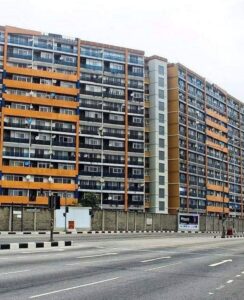
With manicured lawns, swimming pools, tennis courts, and uninterrupted electricity, 1004 became the “dream address” of Nigeria’s ruling elite.
READ ALSO:Bullion Records Celebrates UK-Based Music Executive Chief Otolowo on Birthday
A Childhood Memory: When 1004 Defined Electricity in Lagos
I grew up with my own impressions of 1004 Estate, long before I became a journalist. Born on Lagos Island in the late 1970s, my parents moved us to Maroko in 1984 — a bustling but underserved community that shared a boundary with 1004.
Back then, the estate was not just a symbol of privilege but also of something more basic: electricity. While Victoria Island, including 1004, enjoyed steady power, Maroko and neighboring towns — Ikate-Elegushi, Ilasan, Igbokushu, Gbara, Mayegun, Osapa, Ologolo, and Igbo-Efon — lived largely in darkness.
Children from these communities only saw electricity when they attended schools in Victoria Island or accompanied their parents to the city center — CMS, Obalende, Idumota, and my birthplace, Oke-Popo. For Maroko residents, 1004 was the visible line where privilege stopped.
I remember clearly: during naming ceremonies or funerals, Maroko families would buy ice blocks from 1004 residents to chill drinks for their guests. To us, that ability to keep a beverage cold was a taste of paradise.
That paradise ended in 1990, when Military Governor Raji Rasaki ordered the demolition of Maroko. Thousands of families were uprooted and resettled in the Ilasan Jakande Housing Estate, built earlier by Governor Lateef Jakande. Where Maroko once stood is now the prestigious Lekki Phase 1. Surrounding towns that were once rural outposts — Ikate, Ilasan, Gbara, Osapa, and Igbo-Efon — now form part of what is called Lekki Phase 2.
Electricity only came to the Jakande Estate and much of that axis in 1996, years after Maroko’s people had lost their homes. Later, the lagoon at Admiralty Way was sandfilled — first under Military Governor Buba Marwa, then expanded by Governor Bola Ahmed Tinubu — creating new upscale neighborhoods that define Lekki’s skyline today.
For me, the story of 1004 Estate cannot be told without Maroko. It was more than luxury apartments; it was the shining neighbor that highlighted Lagos’s deepest contrasts — abundance on one side, scarcity on the other, separated only by a wall.
READ ALSO:APC Youths Brand Makinde’s ₦300bn Loan a Scam
After Abuja: From Political Power to Civil Service Housing
When Nigeria’s political capital shifted to Abuja in 1991, lawmakers left 1004 behind. The government reassigned the apartments to senior civil servants, and later, expatriates working in Lagos’s booming oil and finance industries.
The estate thus transitioned from being a political haven to a cosmopolitan hub, reflecting Lagos’s own evolution into a global business city.

The Privatization of 1004 Estate (2004–2009)
By the early 2000s, Nigeria’s government, burdened with mounting maintenance costs, sold the estate to UACN Property Development Company (UPDC) in 2004. A ₦7 billion transaction in 2007 became Nigeria’s largest property deal at the time.
Refurbishment followed — electrical, plumbing, and facade upgrades — and by 2009, hundreds of units were presold within a week, signaling the estate’s rebirth as a commercial goldmine.
Cracks in the Jewel: Controversies and Struggles
Privatization, however, did not erase 1004’s troubles. Management disputes, allegations of corruption, and resident protests dented its image. In 2016, armed security was deployed during clashes between residents and administrators.
Then in 2021, tragedy struck: a young resident reportedly jumped to his death during an EFCC raid, fearing arrest.
1004 Estate Today: Lagos’ Inequality in Microcosm
Today, 1004 Estate is home to professionals, expatriates, and short-let businesses. Its prime location keeps it desirable, but its aging infrastructure and management disputes remain sore points.
It is both a coveted address and a cautionary tale — as much about Lagos’s ambition as about its unfinished struggles in governance, housing, and urban planning.
The Metaphor of 1004 and Maroko
The journey of 1004 mirrors Nigeria’s trajectory:
Born of ambition — to house lawmakers in style.
Reshaped by politics — when the capital shifted.
Privatized by necessity — reflecting neoliberal reforms.
Contested in reality — where luxury meets frustration.
Looking back, the shimmering lights of 1004 that once stopped at its boundary while Maroko remained in darkness now feel like a metaphor for Nigeria’s persistent urban inequality. Decades later, many communities across Lagos and beyond still wrestle with the same divide — islands of privilege surrounded by seas of neglect.
READ ALSO:Oworonshoki Residents Block Third Mainland Bridge Over Demolition Exercise (Photo+Video)
The story of 1004 is not just about architecture or politics; it is about how cities remember and forget, how prosperity is unevenly distributed, and how the hopes of ordinary people — like the children of Maroko who once bought ice blocks from across the wall — remain bound to Nigeria’s broader struggle for inclusion and equity.
By Ibrahim Kegbegbe
Journalist and Public Affairs Analyst | Lagos, Nigeria

